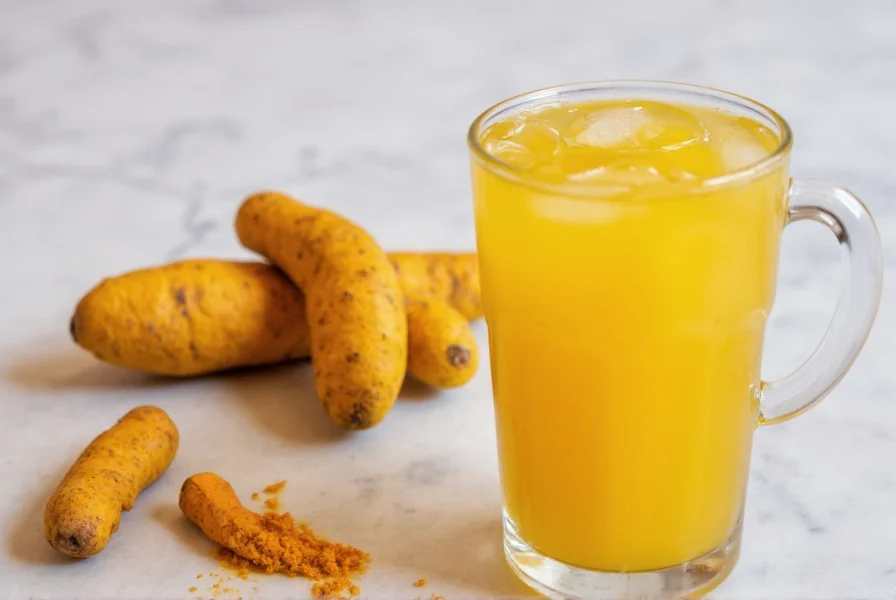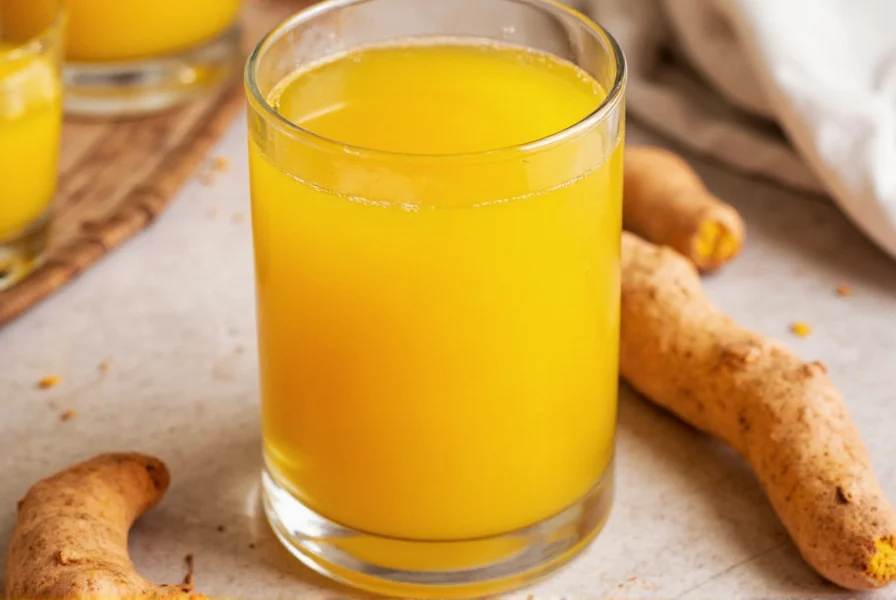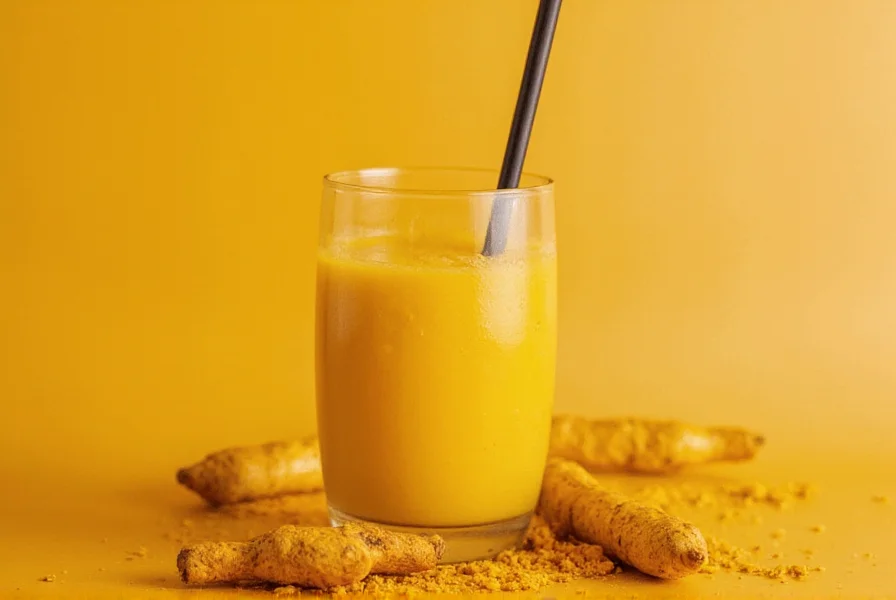A turmeric drink represents one of the most accessible ways to incorporate curcumin—the active compound in turmeric—into your daily routine. Unlike plain turmeric supplements, these beverages offer enhanced bioavailability when prepared correctly, addressing the compound's naturally poor absorption rate. Scientific studies indicate curcumin may support the body's natural inflammatory response and provide antioxidant protection, though it's not a substitute for medical treatment. The traditional preparation method significantly impacts effectiveness, making proper formulation essential for anyone seeking potential health benefits from this ancient spice.
The Science Behind Turmeric and Curcumin Bioavailability
Turmeric contains curcuminoids, with curcumin being the most studied compound. However, curcumin faces significant bioavailability challenges—it's poorly absorbed, rapidly metabolized, and quickly eliminated from the body. Research published in Advances in Experimental Medicine and Biology demonstrates that combining turmeric with piperine (found in black pepper) can increase curcumin absorption by up to 2,000%. Similarly, consuming turmeric with healthy fats enhances its solubility, as curcumin is fat-soluble.
When preparing a turmeric beverage, these scientific principles must inform your recipe. A basic effective turmeric drink requires three key components: turmeric (providing curcumin), black pepper (providing piperine), and a fat source (like coconut milk or ghee). Without these elements, you're likely consuming a beverage with minimal potential benefits, regardless of the turmeric quantity used.
Evidence-Based Benefits of Regular Turmeric Consumption
Multiple clinical studies have investigated curcumin's potential effects. A systematic review in Nutrients (2017) analyzed 120 studies on curcumin's anti-inflammatory properties, noting its potential to modulate multiple inflammatory pathways. However, researchers consistently emphasize that benefits depend on proper formulation and consistent consumption.
Current research suggests potential benefits may include:
- Supporting the body's natural inflammatory response
- Providing antioxidant protection against free radicals
- Contributing to joint comfort when used consistently
- Supporting cognitive health through potential neuroprotective effects
It's crucial to understand that turmeric drinks are not medical treatments. The National Center for Complementary and Integrative Health states that while preliminary research shows promise, more extensive human trials are needed to confirm many potential benefits. Always consult your healthcare provider before using turmeric drinks for specific health concerns, especially if taking medications.
| Component | Function | Optimal Amount |
|---|---|---|
| Turmeric powder | Provides curcuminoids | 1/2 to 1 teaspoon per serving |
| Black pepper | Enhances curcumin absorption | 1/8 teaspoon (pinch) |
| Fat source | Improves solubility of curcumin | 1/2 to 1 teaspoon oil or full-fat milk |
| Liquid base | Creates beverage consistency | 1 cup (dairy or plant-based milk, water, or broth) |
How to Prepare an Effective Turmeric Drink
Creating a turmeric beverage that maximizes potential benefits requires attention to preparation details. The traditional golden milk recipe remains popular for good reason—it incorporates all the necessary elements for optimal curcumin absorption.
Basic Golden Milk Recipe:
- Heat 1 cup of milk (dairy or unsweetened plant-based) in a small saucepan
- Add 1/2 teaspoon turmeric powder, 1/8 teaspoon black pepper, and 1/2 teaspoon coconut oil or ghee
- Whisk continuously for 3-5 minutes until well combined and slightly thickened
- Add optional ingredients: cinnamon, ginger, or a small amount of honey
- Strain if using fresh turmeric or ginger
- Consume immediately for best results
For enhanced benefits, consider these preparation tips:
- Heat the mixture gently—boiling can degrade some beneficial compounds
- Use freshly ground black pepper for maximum piperine content
- Consider adding a small amount of ginger for complementary benefits
- Consume in the evening, as many find turmeric drinks promote relaxation

Safety Considerations and Realistic Expectations
While turmeric is generally recognized as safe by the FDA, certain precautions are necessary. High doses or long-term use may cause gastrointestinal discomfort in some individuals. Turmeric can interact with blood thinners, diabetes medications, and certain chemotherapy drugs. The European Food Safety Authority recommends a maximum daily intake of 0.1 mg of curcumin per pound of body weight (approximately 225 mg for a 150-pound person).
It's essential to maintain realistic expectations about turmeric drinks. They represent a complementary approach to wellness, not a standalone solution for health conditions. Benefits typically develop gradually with consistent use over weeks or months, not immediately. If you have specific health concerns, consult a healthcare professional rather than relying solely on turmeric beverages.
Variations of Turmeric Drinks Across Cultures
Turmeric beverages appear in traditional medicine systems worldwide, each with unique preparation methods that enhance bioavailability:
- Indian Haldi Doodh: Traditional golden milk with turmeric, milk, black pepper, and sometimes cardamom
- Ayurvedic Turmeric Tea: Often includes additional herbs like ashwagandha or tulsi for specific health goals
- Caribbean Turmeric Tea: Typically made with fresh turmeric root, ginger, and citrus
- Modern Wellness Variations: Include turmeric lattes, smoothies, and even savory turmeric broths
These cultural variations demonstrate how different traditions have independently discovered the importance of combining turmeric with absorption-enhancing ingredients—a testament to the wisdom embedded in traditional food preparation methods.

Choosing Quality Ingredients for Your Turmeric Drink
The effectiveness of your turmeric beverage depends significantly on ingredient quality. When selecting turmeric, look for products with certification from reputable organizations that test for purity and curcumin content. Organic turmeric typically contains higher curcumin levels and fewer contaminants. Fresh turmeric root provides more complete phytochemical profile than powder but has a shorter shelf life.
Be cautious of products marketed as "enhanced absorption" turmeric supplements, as many contain additives with limited research on long-term safety. For homemade drinks, the traditional combination of black pepper and healthy fats remains the most researched and safest approach to improving curcumin bioavailability.
Frequently Asked Questions
How often should I drink turmeric beverages for potential benefits?
For general wellness support, consuming a turmeric drink once daily is common practice. Research suggests consistent daily consumption over several weeks may be necessary to experience potential benefits. However, individual responses vary, and it's important to monitor how your body responds. Those with specific health concerns should consult a healthcare provider for personalized guidance.
Can I make turmeric drinks without dairy or animal products?
Yes, excellent dairy-free alternatives exist. Unsweetened coconut milk, almond milk, or oat milk work well as bases for turmeric drinks. The key is selecting a plant-based milk with some fat content to enhance curcumin absorption. You can also add a small amount of coconut oil, MCT oil, or ghee substitute to any plant-based milk to improve bioavailability.
What's the difference between using fresh turmeric and powdered turmeric?
Fresh turmeric root contains the full spectrum of curcuminoids and volatile oils that may be lost in the drying process for powder. However, powdered turmeric offers more consistent curcumin concentration. Fresh turmeric typically requires about three times the quantity of powder to achieve similar potency. Both forms benefit from being combined with black pepper and a fat source for optimal absorption.
When is the best time to drink turmeric beverages?
Many people prefer consuming turmeric drinks in the evening due to potential relaxation benefits. The warmth and certain compounds may support restful sleep. However, the timing matters less than consistent daily consumption. Some prefer morning consumption to support daytime wellness. The most important factor is choosing a time you can maintain consistently, with or after a meal containing some fat for better absorption.
How long does it take to notice effects from regular turmeric drink consumption?
Most people don't experience immediate effects from turmeric drinks. Research suggests it may take 4-8 weeks of consistent daily consumption to potentially notice benefits related to inflammation or joint comfort. Individual responses vary significantly based on metabolism, health status, and the specific formulation of the drink. Patience and consistency are key when incorporating turmeric beverages into your wellness routine.











 浙公网安备
33010002000092号
浙公网安备
33010002000092号 浙B2-20120091-4
浙B2-20120091-4